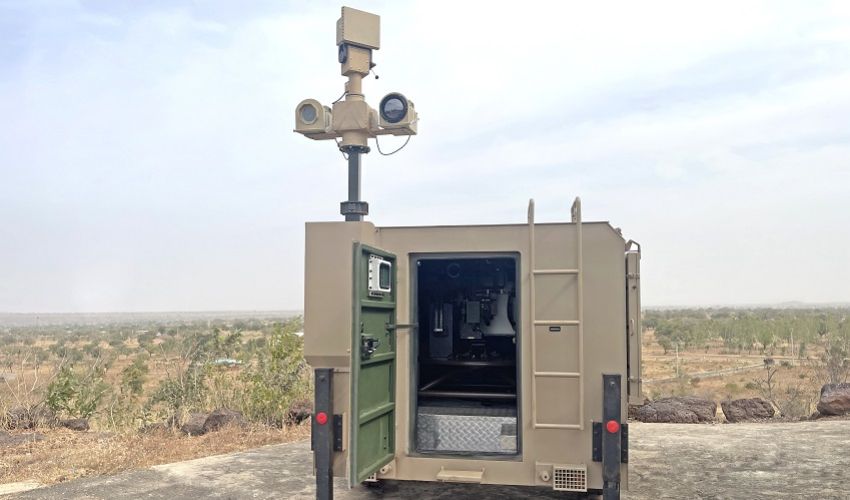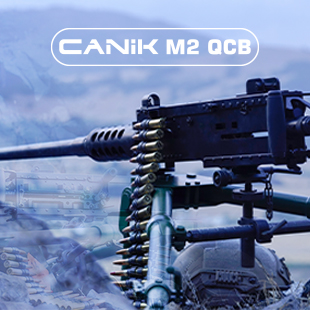CANiK Supports Its Products with Its “User-Oriented After Sales Logistics Support” Perspective
ILS deals with all the processes throughout a product's lifecycle, from the idea phase to the end of the service. These processes may be listed as design, development, testing, production, entering service, training, active service, maintenance, modernization, and end of the service.

CANiK’s products are used by a vast audience, including members of the armed forces and security forces, along with civilian users. The company supports its products with its modern integrated logistics support (ILS) perspective.
ILS deals with all the processes throughout a product's lifecycle, from the idea phase to the end of the service. These processes may be listed as design, development, testing, production, entering service, training, active service, maintenance, modernization, and end of the service. Planning the activities during these processes and performing all the managerial and technical activities regarding these plans are a part of ILS.
CANiK’s ILD approach is based on a solution-focused constructive perspective, empathising with the end user, understanding the end user and ensuring the end user’s problems are solved as quickly as possible. CANiK’s main aim is thus reducing the system’s downtime as much as possible, by determining the need or issue as soon as possible through the information given by the end user, and by planning for a solution with the same haste.
In this context, the components that comprise CANiK’s ILS activities can be listed as follows:
• Planned, malfunction-focused, and predictive maintenance and repair
• Inventory and spare parts management and procurement
• Documentation
• Integration
• Periodic controls
• Testing
• Firing tests
• Manpower and personnel support
• Training and training support
ILS for Military Systems
Military systems need a specialized ILS approach as these systems are high-tech systems that require continuous uptime, especially in the most dangerous areas. Providing support in the field, if necessary, in operational areas, and ensuring all these activities can be performed sustainably and cost-effectively is crucial.
Procuring military systems that can reliably serve for a long time and that need minimal support will reduce costs for the armed forces. Besides, ILS concepts must apply to the whole lifecycle of the system rather than just the procurement process. In other words, in today’s defence and aerospace projects, reducing the costs of operations arising from 30-40 years of service must be one of the aims with ILS activities.
Thanks to the comprehensive and effective ILS services CANiK provides for military systems, ensuring all CANiK-made military systems are always ready for service everywhere is one of the crucial performance metrics for the company.
A Brief History of ILS
ILS was conceptualized during the World War II and developed by the experience gained during and after the war. The United States Armed Forces offered this concept to ensure supportability throughout the design and development processes of a product or equipment.
Throughout the years, ILS was understood as a must, from the design phase and onward, and thus became a critical component of the projects. The modern ILS as a concept became a reality in the 1980s. In 1993, the Ministry of Defence of the United Kingdom made it mandatory to meet ILS-related requirements in procurement processes for many products.
In today’s world, ILS is a holistic method that includes every single process for a system, starting from the design phase to the development, entry into service, active service, and end of service.
Life Cycle Costs of Systems and ILS
A major part of the life cycle costs of systems is operational and support activities, with 85 percent, and a significant portion of these costs are required for supportability.
ILS deals with all the processes throughout a product's lifecycle, from the idea phase to the end of the service. These processes may be listed as design, development, testing, production, entering service, training, active service, maintenance, modernization, and end of the service. Planning the activities during these processes and performing all the managerial and technical activities regarding these plans are a part of ILS.
CANiK’s ILD approach is based on a solution-focused constructive perspective, empathising with the end user, understanding the end user and ensuring the end user’s problems are solved as quickly as possible. CANiK’s main aim is thus reducing the system’s downtime as much as possible, by determining the need or issue as soon as possible through the information given by the end user, and by planning for a solution with the same haste.
In this context, the components that comprise CANiK’s ILS activities can be listed as follows:
• Planned, malfunction-focused, and predictive maintenance and repair
• Inventory and spare parts management and procurement
• Documentation
• Integration
• Periodic controls
• Testing
• Firing tests
• Manpower and personnel support
• Training and training support
ILS for Military Systems
Military systems need a specialized ILS approach as these systems are high-tech systems that require continuous uptime, especially in the most dangerous areas. Providing support in the field, if necessary, in operational areas, and ensuring all these activities can be performed sustainably and cost-effectively is crucial.
Procuring military systems that can reliably serve for a long time and that need minimal support will reduce costs for the armed forces. Besides, ILS concepts must apply to the whole lifecycle of the system rather than just the procurement process. In other words, in today’s defence and aerospace projects, reducing the costs of operations arising from 30-40 years of service must be one of the aims with ILS activities.
Thanks to the comprehensive and effective ILS services CANiK provides for military systems, ensuring all CANiK-made military systems are always ready for service everywhere is one of the crucial performance metrics for the company.
A Brief History of ILS
ILS was conceptualized during the World War II and developed by the experience gained during and after the war. The United States Armed Forces offered this concept to ensure supportability throughout the design and development processes of a product or equipment.
Throughout the years, ILS was understood as a must, from the design phase and onward, and thus became a critical component of the projects. The modern ILS as a concept became a reality in the 1980s. In 1993, the Ministry of Defence of the United Kingdom made it mandatory to meet ILS-related requirements in procurement processes for many products.
In today’s world, ILS is a holistic method that includes every single process for a system, starting from the design phase to the development, entry into service, active service, and end of service.
Life Cycle Costs of Systems and ILS
A major part of the life cycle costs of systems is operational and support activities, with 85 percent, and a significant portion of these costs are required for supportability.





